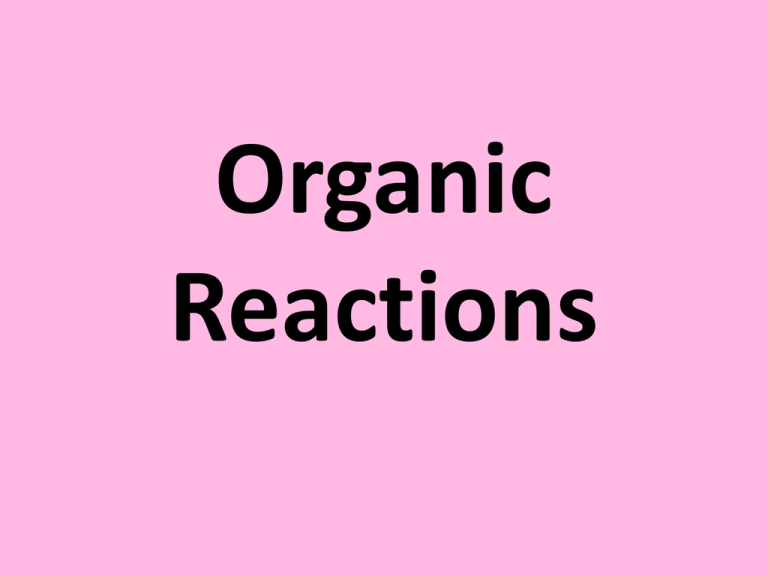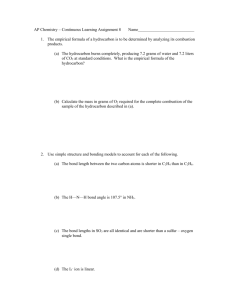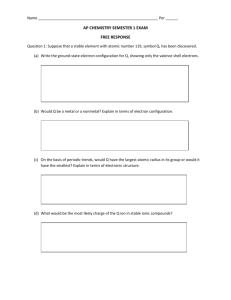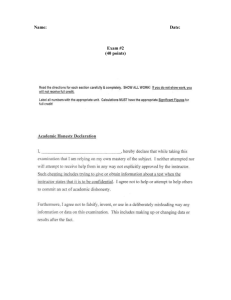Organic Reactions - Ms. Mogck's Classroom
advertisement

Organic Reactions Complete Combustion • Hydrocarbon ignited in a condition of excess oxygen will combust (oxidize) • Forms carbon dioxide, energy and water • Combustion is an exothermic reaction (so the net reaction involves the net output of heat energy) Example • Write the chemical equation that describes the combustion of propane in an oxygenated environment. Incomplete Combustion • chemical combustion is assumed complete unless otherwise stated • If the oxygen is stoichiometrically limited, the combustion is incomplete Products of Incomplete Combustion • CO2, CO and C are all created and manifest as soot or ash Substitution • One or more hydrogen atoms are replaced by another atom (or group) • Occurs on alkanes • Only 1 atom may be added per substitution • Often occurs with halogens (producing a halocarbon and hydrogen halide) HC + halogen halocarbon + hydrogen halide Examples 1. Reaction of butane with bromine 2. Reaction of toluene with iodine 3. Reaction of decane with fluorine Addition • Addition reactions involve the breaking of UNSATURATED BONDS (double or triple bonds) • 4 types of addition: 1. Hydrogenation • hydrogen atoms are added to an unsaturated compound to make it more saturated 2. Hydration • Water is added to unsaturated hydrocarbons to create an alcohol 3. Addition of Halogens, Hydrogen Halides and Acids • Halogens break the unsaturated bonds to add attached atoms 4. Multiple Additions • Multiple molecular additions are usually additions with aromatics or alkynes Examples 1. The addition of hydrogen to propene 1. The addition of water to cyclohexene 2. The addition of fluorine to ethyne can occur twice 3. The addition of water to prop-1-yne followed by the addition of iodine Cracking • In the presence of a catalyst and / or heat, hydrogen gas can be used to split hydrocarbon chains • addition of 2 hydrogens Example • Cracking 2,3,5-trimethyl nonane on the 4th bond Reforming • Opposite of hydrocarbon cracking • Heat and / or catalyst is used to join smaller molecules • Hydrogen gas is produced Dehydrogenation • Creating an unsaturated bond from a saturated hydrocarbon Example: • Creating butene from butane in the presence of heat Esterification • Condensation reaction between a carboxylic acid and an alcohol produces an ester and water • The hydrogen atom leaves the alcohol and a hydroxyl group leaves the carboxylic acid (creating water) Example 1. The reaction between ethanol and butanoic acid 2. The reaction between pentanoic acid and decanol 3. The reaction between benzenoic acid and phenol Elimination • Reaction of an alkyl halide with a hydroxide ion to form an alkene, a halide ion and water • The hydroxide (OH-) takes a hydrogen from the hydrocarbon to form water • The halide breaks away from the hydrocarbon chain and the HC forms a double bond Example 1. The addition of hydroxide ion to 3-chloroheptane 2. The addition of hydroxide ion to iodocyclooctane





